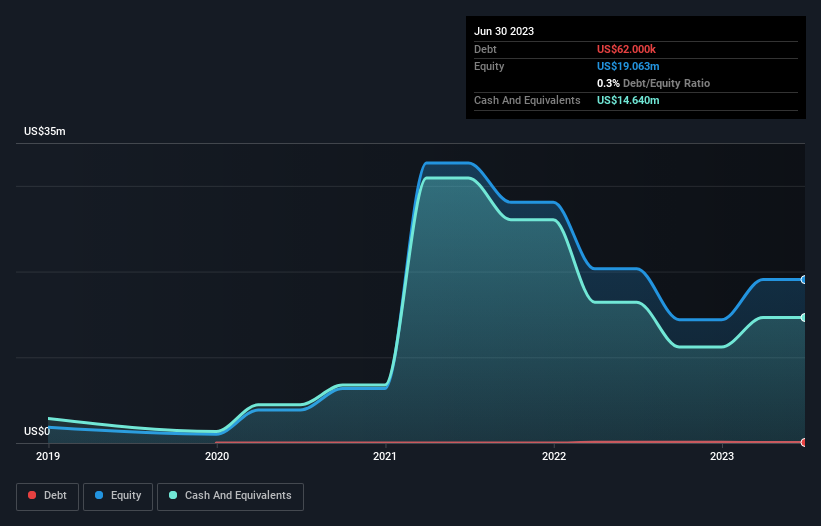- Israel
- /
- Consumer Durables
- /
- TASE:HMGS
Here's Why We're Watching HomeBiogas' (TLV:HMGS) Cash Burn Situation

Just because a business does not make any money, does not mean that the stock will go down. For example, biotech and mining exploration companies often lose money for years before finding success with a new treatment or mineral discovery. Having said that, unprofitable companies are risky because they could potentially burn through all their cash and become distressed.
So, the natural question for HomeBiogas (TLV:HMGS) shareholders is whether they should be concerned by its rate of cash burn. For the purposes of this article, cash burn is the annual rate at which an unprofitable company spends cash to fund its growth; its negative free cash flow. We'll start by comparing its cash burn with its cash reserves in order to calculate its cash runway.
View our latest analysis for HomeBiogas
Does HomeBiogas Have A Long Cash Runway?
You can calculate a company's cash runway by dividing the amount of cash it has by the rate at which it is spending that cash. As at June 2023, HomeBiogas had cash of US$15m and such minimal debt that we can ignore it for the purposes of this analysis. In the last year, its cash burn was US$11m. That means it had a cash runway of around 16 months as of June 2023. While that cash runway isn't too concerning, sensible holders would be peering into the distance, and considering what happens if the company runs out of cash. You can see how its cash balance has changed over time in the image below.

How Is HomeBiogas' Cash Burn Changing Over Time?
Whilst it's great to see that HomeBiogas has already begun generating revenue from operations, last year it only produced US$5.9m, so we don't think it is generating significant revenue, at this point. As a result, we think it's a bit early to focus on the revenue growth, so we'll limit ourselves to looking at how the cash burn is changing over time. With cash burn dropping by 20% it seems management feel the company is spending enough to advance its business plans at an appropriate pace. In reality, this article only makes a short study of the company's growth data. This graph of historic revenue growth shows how HomeBiogas is building its business over time.
How Easily Can HomeBiogas Raise Cash?
Even though it has reduced its cash burn recently, shareholders should still consider how easy it would be for HomeBiogas to raise more cash in the future. Companies can raise capital through either debt or equity. One of the main advantages held by publicly listed companies is that they can sell shares to investors to raise cash and fund growth. By looking at a company's cash burn relative to its market capitalisation, we gain insight on how much shareholders would be diluted if the company needed to raise enough cash to cover another year's cash burn.
Since it has a market capitalisation of US$20m, HomeBiogas' US$11m in cash burn equates to about 54% of its market value. From this perspective, it seems that the company spent a huge amount relative to its market value, and we'd be very wary of a painful capital raising.
Is HomeBiogas' Cash Burn A Worry?
On this analysis of HomeBiogas' cash burn, we think its cash burn reduction was reassuring, while its cash burn relative to its market cap has us a bit worried. Looking at the factors mentioned in this short report, we do think that its cash burn is a bit risky, and it does make us slightly nervous about the stock. Separately, we looked at different risks affecting the company and spotted 2 warning signs for HomeBiogas (of which 1 doesn't sit too well with us!) you should know about.
Of course, you might find a fantastic investment by looking elsewhere. So take a peek at this free list of companies insiders are buying, and this list of stocks growth stocks (according to analyst forecasts)
Valuation is complex, but we're here to simplify it.
Discover if HomeBiogas might be undervalued or overvalued with our detailed analysis, featuring fair value estimates, potential risks, dividends, insider trades, and its financial condition.
Access Free AnalysisHave feedback on this article? Concerned about the content? Get in touch with us directly. Alternatively, email editorial-team (at) simplywallst.com.
This article by Simply Wall St is general in nature. We provide commentary based on historical data and analyst forecasts only using an unbiased methodology and our articles are not intended to be financial advice. It does not constitute a recommendation to buy or sell any stock, and does not take account of your objectives, or your financial situation. We aim to bring you long-term focused analysis driven by fundamental data. Note that our analysis may not factor in the latest price-sensitive company announcements or qualitative material. Simply Wall St has no position in any stocks mentioned.
About TASE:HMGS
HomeBiogas
HomeBiogas LTD develops, produces, and markets biogas systems for treatment of organic waste into clean energy for households, farmers, businesses, and communities worldwide.
Medium-low with mediocre balance sheet.
Market Insights
Community Narratives




